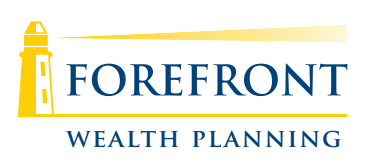Active vs Passive in 2025: Who’s Winning?
Cutting Through the Noise
But beyond all that noise, one question matters: Does active management really beat simple indexing?
So, is active worth the cost?
What the Numbers Say
The SPIVA Scorecard, published by S&P Dow Jones, regularly compares active fund performance against market benchmarks.
- For the year ending December 31, 2024, roughly 60% of active large-cap funds trailed the S&P 500.
- Over three years, that jumps to about 80% underperforming.
- And over ten years, nearly 89% of active funds failed to beat the market.
Recent Performance in 2025
Fees matter. A lot.
Active funds typically charge around 0.66% per year. Index funds and ETFs usually cost about 0.05%. That’s more than half a percent disadvantage right out of the gate.
Then there’s the tax issue. Active funds trade often, generating unexpected tax bills.
Morningstar research shows active funds typically cost investors around 1.2% per year in taxes, compared to only 0.3% or less for index funds or ETFs.
Combine fees and taxes, and you’re down around 1% to 1.5% annually before performance even enters the equation.
Direct Indexing: A Better Way
That’s where direct indexing can help.
Direct indexing involves owning individual stocks that mimic an index. You can sell specific losing stocks, harvest the tax losses, and buy similar stocks to stay aligned with the index.
Goldman Sachs research from 2023 indicates that direct indexing strategies can increase after-tax returns by approximately 1.00% to 1.35% per year through systematic tax-loss harvesting.
Morningstar’s 2024 research confirms this. They found direct indexing added about 1.1% annually in after-tax returns compared to traditional market ETFs over a ten-year period.
Direct indexing isn’t guessing the market. It’s systematic, disciplined, and designed to enhance returns through more effective tax planning.
Your Investing Options Simplified
Active funds typically underperform, incur higher costs, and generate more taxes.
Passive indexing is a low-cost and reliable option, but it doesn’t offer much flexibility with taxes.
Direct indexing combines the best of both worlds: market-like returns plus smart tax-loss harvesting to potentially outperform after taxes.
The Bottom Line
Investing can already feel tough enough. There’s no reason to make it harder by paying extra fees and taxes, hoping to beat the market.
For high-income investors, real returns often come from smarter tax strategies, not from stock picking.
If you’re still holding expensive active funds or old-school mutual funds in a taxable account, you’re probably losing returns each year without realizing it.
Thankfully, that’s something we can fix.
Sources
- S&P Dow Jones Indices, SPIVA U.S. Year-End 2024 Scorecard
- JPMorgan Asset Management, Morningstar mid-year data (June 2025)
- Morningstar, Tax Cost Ratio Report (2024)
- Goldman Sachs, Direct Indexing Whitepaper (2023)
Stock market calendar this week:
| Time (ET) | Report |
| MONDAY, JULY 28 | |
| None scheduled | |
| TUESDAY, JULY 29 | |
| 8:30 AM | Advanced U.S. trade balance in goods |
| 8:30 AM | Advanced retail inventories |
| 8:30 AM | Advanced wholesale inventories |
| 9:00 AM | S&P Case-Shiller home price index (20 cities) |
| 10:00 AM | [Consumer confidence] |
| 10:00 AM | Job openings |
| WEDNESDAY, JULY 30 | |
| 8:15 AM | ADP employment |
| 8:30 AM | GDP |
| 8:30 AM | GDP price index |
| 10:00 AM | Pending home sales |
| 2:00 PM | FOMC interest-rate decision |
| 2:30 PM | Fed Chair Powell press conference |
| THURSDAY, JULY 31 | |
| 8:30 AM | Initial jobless claims |
| 8:30 AM | Employment cost index |
| 8:30 AM | Personal income |
| 8:30 AM | Personal spending |
| 8:30 AM | PCE index |
| 8:30 AM | PCE (year-over-year) |
| 8:30 AM | Core PCE index |
| 8:30 AM | Core PCE (year-over-year) |
| 9:45 AM | Chicago Business Barometer (PMI) |
| FRIDAY, AUG 1. | |
| 8:30 AM | U.S. employment report |
| 8:30 AM | U.S. unemployment rate |
| 8:30 AM | U.S. hourly wages |
| 8:30 AM | Hourly wages year over year |
| 9:45 AM | S&P final U.S. manufacturing PMI |
| 10:00 AM | ISM manufacturing |
| 10:00 AM | Construction spending |
| 10:00 AM | Consumer sentiment (final) |
| TBA | Auto sales |
Most anticipated earnings for this week

Did you miss our last blog?
About Amit: I am a first generation American, the son of a working-class Indian family, and I lived through my parents’ struggle to find their place in this country, to put down roots that would sustain them as well as their children in a new land. As they encouraged me to excel in school and fostered my hobbies and interests, I was keenly aware of the dynamic between them. I understood that there was a difference between where they came from individually and where we were now. They worked hard in their individual capacities, but they weren’t always on the same page about financial issues – and that can make or break a family’s future. I didn’t know it at the time, but this laid the groundwork for my passion towards financial services and helping families succeed.

